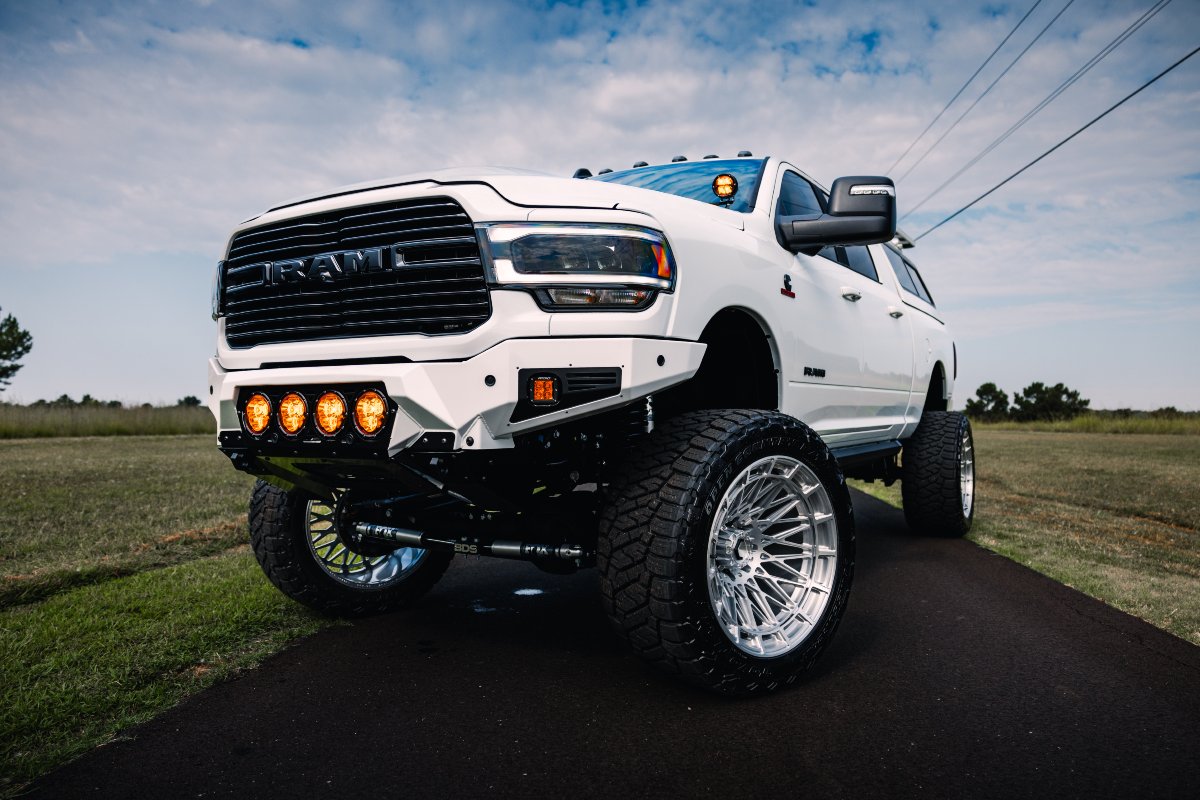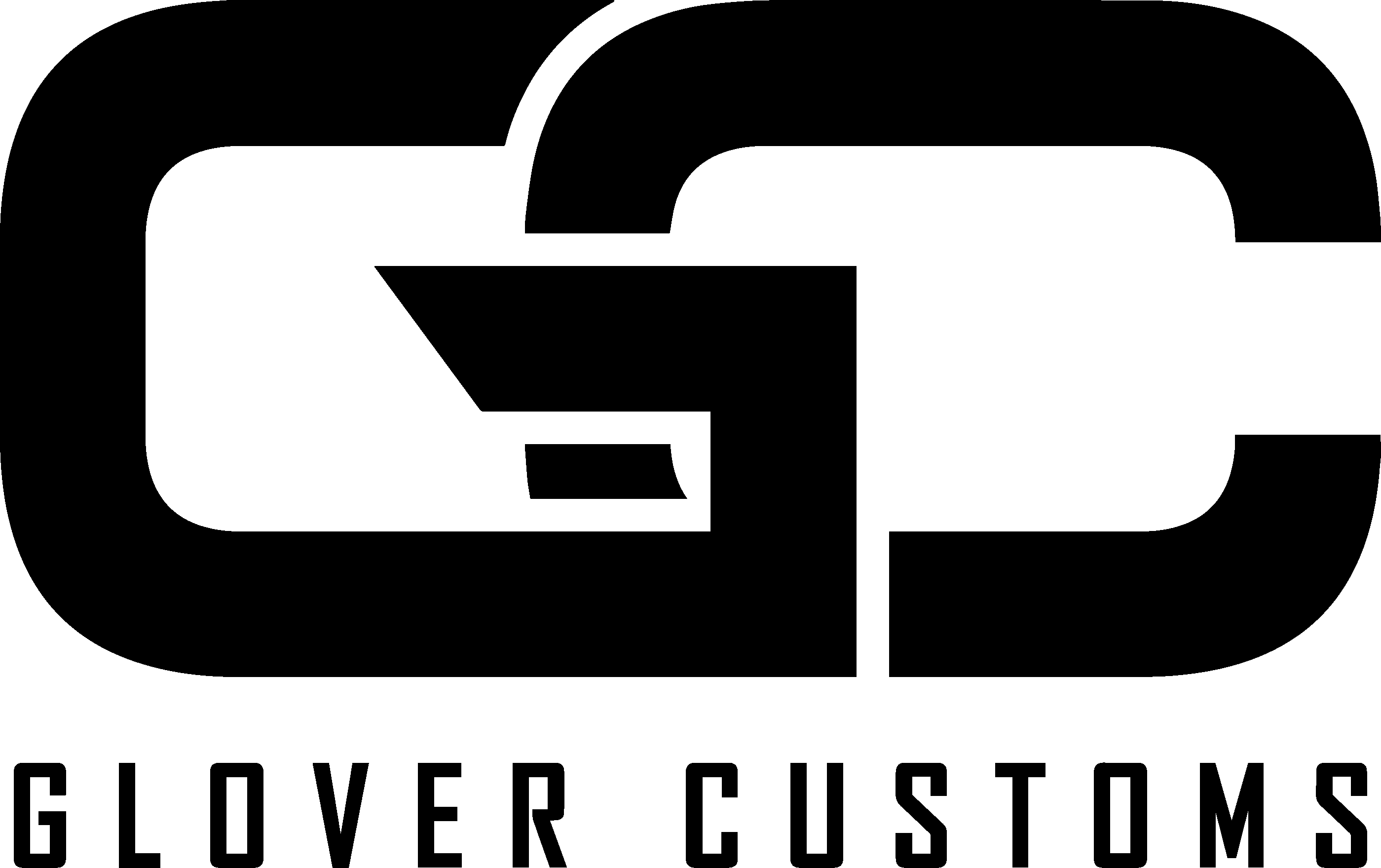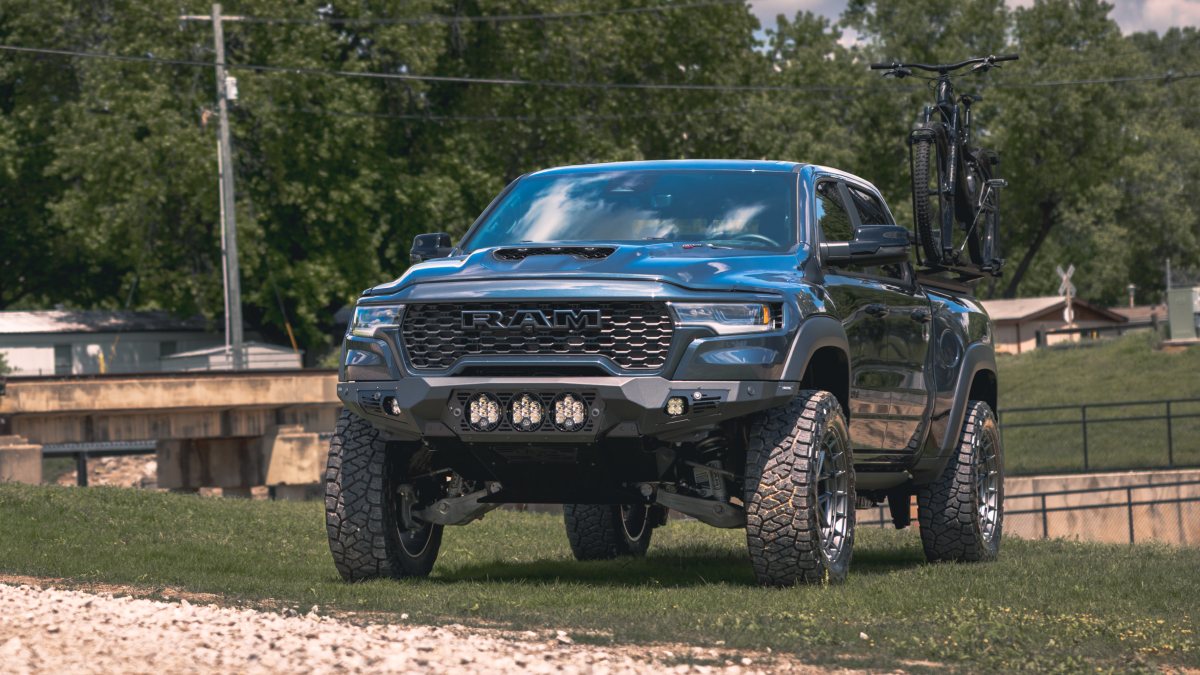If you’re building a lifted RAM pickup truck, then wheel offset is probably already a topic you’ve considered. If it isn’t, you certainly should, as few choices you’re going to make impact both form and function as much as the wheel offset you choose. Whether you’re looking to give your truck an aggressive stance, trying to dial in the clearance needed for oversized tires or you simply want a truck that looks as tough as it performs, the offset is often the unsung hero of your wheel setup. Today we’re going to help you find the best wheel offset for your lifted RAM, right here on the Glover Customs blog.

What Is Wheel Offset, and Why Does It Matter?
Let’s first start by actually diving into what exactly wheel offset is and why it matters, for those of you who might not know. The term wheel offset refers to the distance between the wheel’s mounting surface and its centerline. It’s measured in millimeters and comes in three styles:
- Positive Offset, which puts the mounting surface closer to the outside of the wheel and tucks the wheel inward
- Zero Offset, which puts the mounting surface exactly at the centerline
- Negative Offset, which puts the mounting surface closer to the inside of the wheel and pushes the wheel outward
When customizing a lifted RAM, your wheel offset determines how far your wheels stick out, how much clearance you have for suspension components and whether or not your tires will rub at full articulation — on top of enhancing the overall aesthetic of your truck.

What’s the Sweet Spot for Lifted RAM Trucks?
Now that we know exactly what wheel offset is and why it matters in custom pickup trucks like your lifted RAM, it’s time to get specific. Which kind of RAM you have – 1500, 2500, 3500 – doesn’t actually matter all that much, but the ideal offset is instead going to depend on your lift height, the size of your tires and the width of your wheels. Without knowing all of those details, it’s hard to give an exact answer, but the following list includes some tried-and-true guidelines for you.
- If you’re looking for an aggressive stance without going too far overboard, you should consider anywhere between a zero offset and a negative offset of -18mm. This range will push the wheels out just enough to clear wider tires while giving you the off-road stance you’re looking for.
- If you’ve customized an extreme build, including 12” wide wheels or 37” tires – or larger – you should consider a negative offset ranging from -24mm to -44mm. This will give you significant poke beyond the fenders, but might require trimming or fender flares.
- Finally, if you simply want to keep your tires tucked or avoid rubbing without trimming, you can choose a positive offset ranging from 12mm to 18mm to keep your truck closer to its stock fitment. This is ideal if you have 8” to 9” wheels and 33” tires.
What Is Backspacing?
We can’t have a blog about wheel offset without at least mentioning backspacing, as the two go hand in hand. While your offset is measured from the wheel’s centerline, backspacing is instead the distance from the mounting surface to the back edge of your wheel. If you have less packspacing, your wheels will set farther out. This is typically the desired effect when building a lifted truck. For example, if you have a negative wheel offset of -18mm, you’ll likely want a backspacing of 4.5” to clear suspension components and keep that aggressive look.
If you still have questions about wheel offset or what you should choose for your lifted RAM truck, don’t hesitate to get in touch with us right here at Glover Customs. We look forward to hearing from you!


